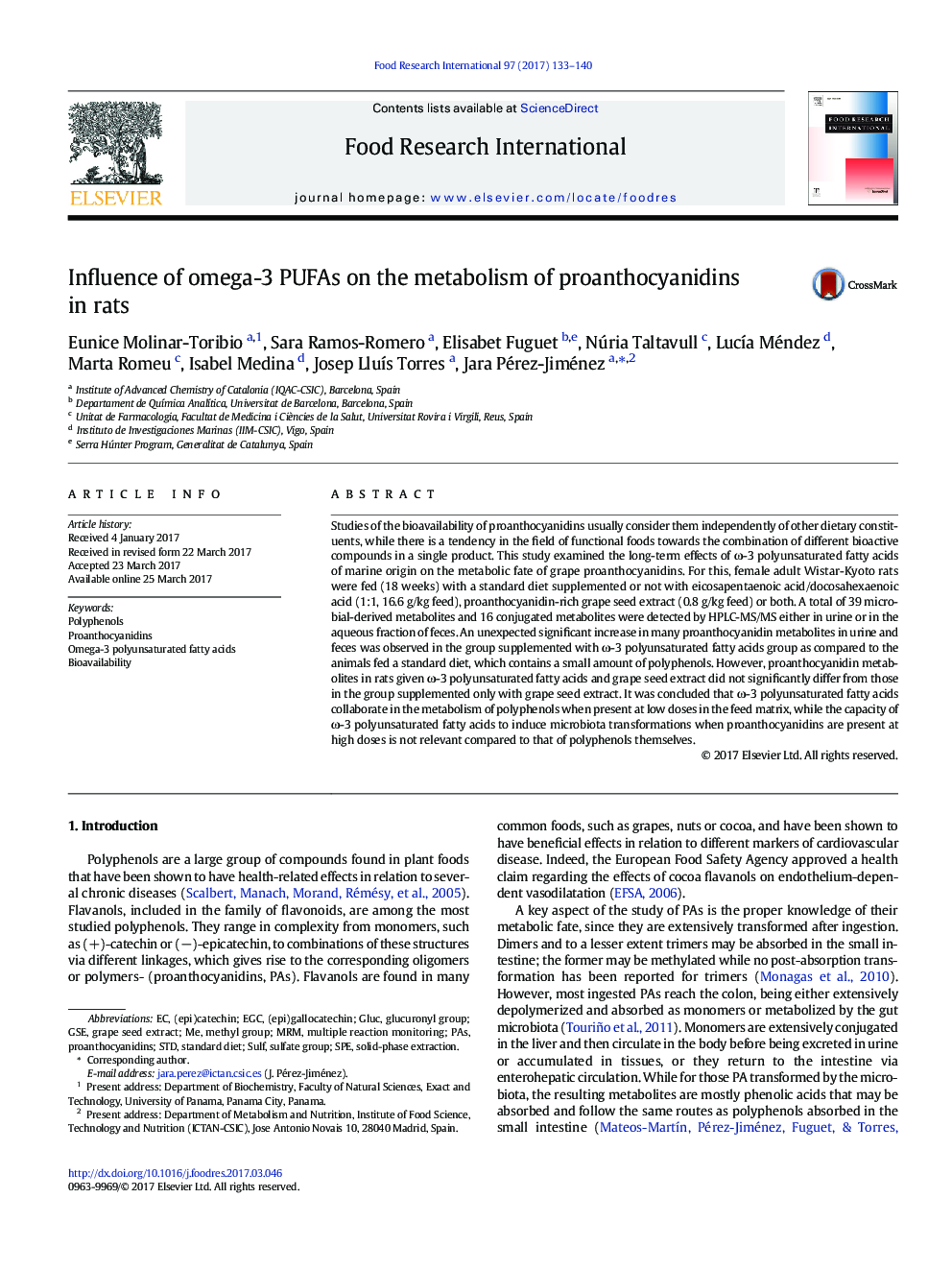| کد مقاله | کد نشریه | سال انتشار | مقاله انگلیسی | نسخه تمام متن |
|---|---|---|---|---|
| 5768216 | 1628453 | 2017 | 8 صفحه PDF | دانلود رایگان |

- Ï-3 PUFAs influence the metabolism of proanthocyanidins (PAs).
- Ï-3 PUFAs increase metabolites of PAs present in the standard diet.
- Ï-3 PUFAs do not increase PA metabolites when PA are given as a supplement.
- Ï-3 PUFAs do not significantly affect PA metabolism given at high doses.
Studies of the bioavailability of proanthocyanidins usually consider them independently of other dietary constituents, while there is a tendency in the field of functional foods towards the combination of different bioactive compounds in a single product. This study examined the long-term effects of Ï-3 polyunsaturated fatty acids of marine origin on the metabolic fate of grape proanthocyanidins. For this, female adult Wistar-Kyoto rats were fed (18Â weeks) with a standard diet supplemented or not with eicosapentaenoic acid/docosahexaenoic acid (1:1, 16.6Â g/kg feed), proanthocyanidin-rich grape seed extract (0.8Â g/kg feed) or both. A total of 39 microbial-derived metabolites and 16 conjugated metabolites were detected by HPLC-MS/MS either in urine or in the aqueous fraction of feces. An unexpected significant increase in many proanthocyanidin metabolites in urine and feces was observed in the group supplemented with Ï-3 polyunsaturated fatty acids group as compared to the animals fed a standard diet, which contains a small amount of polyphenols. However, proanthocyanidin metabolites in rats given Ï-3 polyunsaturated fatty acids and grape seed extract did not significantly differ from those in the group supplemented only with grape seed extract. It was concluded that Ï-3 polyunsaturated fatty acids collaborate in the metabolism of polyphenols when present at low doses in the feed matrix, while the capacity of Ï-3 polyunsaturated fatty acids to induce microbiota transformations when proanthocyanidins are present at high doses is not relevant compared to that of polyphenols themselves.
102
Journal: Food Research International - Volume 97, July 2017, Pages 133-140